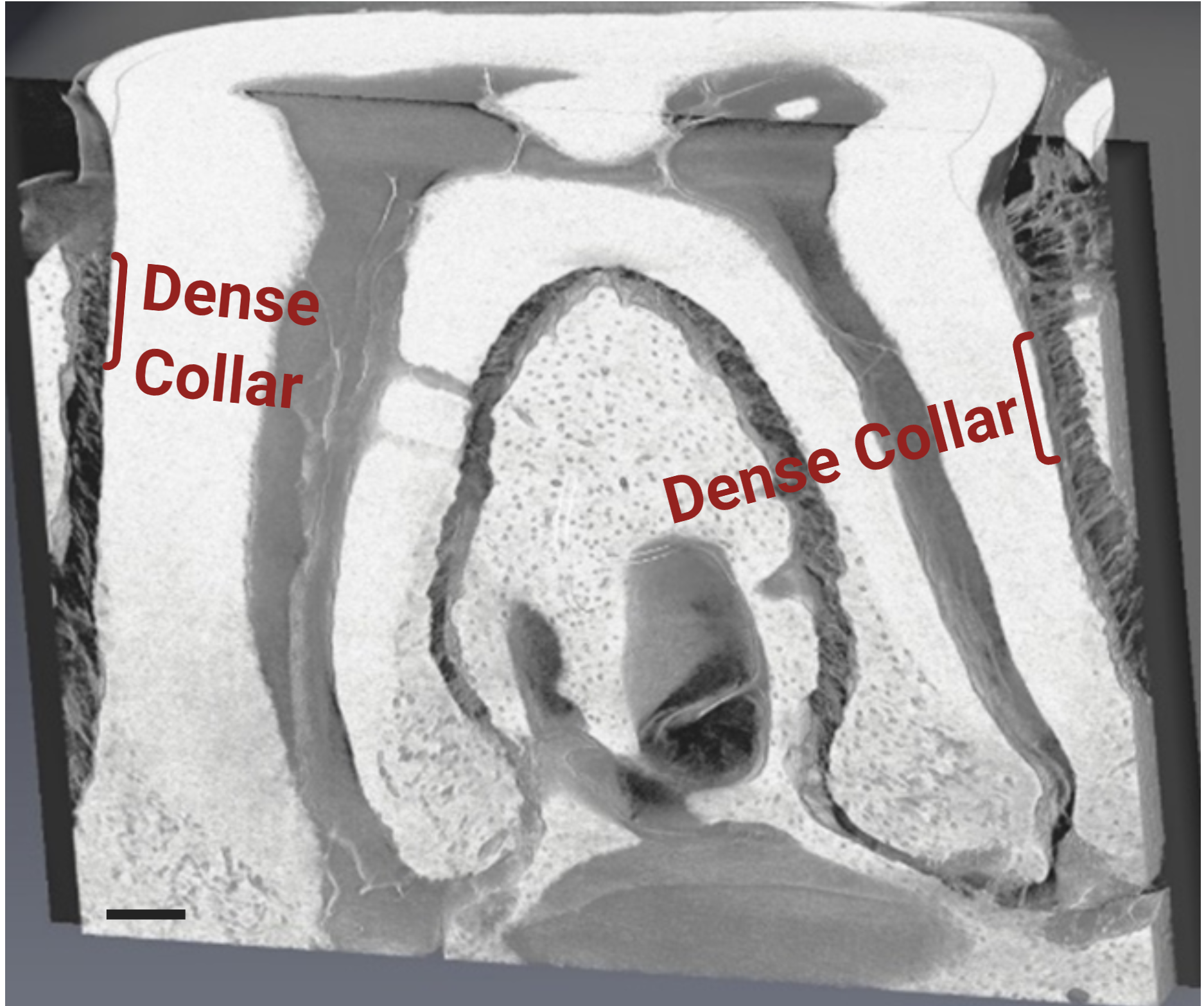Research
Structural Manipulations in the PDL
 The periodontal ligament is considered as a shock absorber for forces occur during mastication however studies also show that the alveolar bone is very responsive when loads are exerted on teeth during mastication. Our recent findings that show the non uniformity in the PDL suggest that different regions in the PDL are designed to transmit the forces to the bone differently. Using various mechanical and structural analytical tools as well as conducting local structural manipulations in the PDL, this project is aimed at looking at the patterns and mechanism of force transmition from the tooth through the PDL to the alveolar bone. A thorough understanding of this mechanism will pave the road for new methods in generating a predictable tooth movement as well as new therpies for periodontal disease.
The periodontal ligament is considered as a shock absorber for forces occur during mastication however studies also show that the alveolar bone is very responsive when loads are exerted on teeth during mastication. Our recent findings that show the non uniformity in the PDL suggest that different regions in the PDL are designed to transmit the forces to the bone differently. Using various mechanical and structural analytical tools as well as conducting local structural manipulations in the PDL, this project is aimed at looking at the patterns and mechanism of force transmition from the tooth through the PDL to the alveolar bone. A thorough understanding of this mechanism will pave the road for new methods in generating a predictable tooth movement as well as new therpies for periodontal disease.
Non-Uniformity In The PDL and Its Functional Implications
 The periodontal ligament (PDL) is a very unique structure as it is the only soft tissue in the entire complex of the teeth and jaw bone. Being the only soft tissue it has a major role in controling the bone remodeling process and therefore tooth movement. In our recent research we showed that the 3D structure of the collagen network within the PDL is not uniform and are organized in sparse and dense networks. Non uniformity in ligaments is usually associated to pathological events and remodeling of the PDL is associated to loads however we found that the different networks are preprogrammed to begenerated according to the loads pattern designed for a specific tooth. This finding implicates that there is an internal force in the PDL that directs tooth movemet. This project is aimed at understanding the correlations betwwen external forces, internal forces and the PDL structure. In order to do so we are combining clinical manipulations, powerful imaging methods such as high resolution microCT, multiphoton microscopy, electron microscopy, 3D image analysis algorithms and protein analytical tools.
The periodontal ligament (PDL) is a very unique structure as it is the only soft tissue in the entire complex of the teeth and jaw bone. Being the only soft tissue it has a major role in controling the bone remodeling process and therefore tooth movement. In our recent research we showed that the 3D structure of the collagen network within the PDL is not uniform and are organized in sparse and dense networks. Non uniformity in ligaments is usually associated to pathological events and remodeling of the PDL is associated to loads however we found that the different networks are preprogrammed to begenerated according to the loads pattern designed for a specific tooth. This finding implicates that there is an internal force in the PDL that directs tooth movemet. This project is aimed at understanding the correlations betwwen external forces, internal forces and the PDL structure. In order to do so we are combining clinical manipulations, powerful imaging methods such as high resolution microCT, multiphoton microscopy, electron microscopy, 3D image analysis algorithms and protein analytical tools.
The Function of Blood Vessels in the PDL and Bone Remodeling
 Differently from most ligaments blood vessels are very abundant in the PDL. The principal notion in orthodontics is that compression in the priodontal ligament creates ischemic events which trigger recruitment of osteoclsts and bone resorption. It is also believed that higher forces in the PDL cause more damage to the boold vessels and generates a different mechanism for bone resorptiom. However this notion was not demonstrated and therefore no fully understood. In order to understand the function of blood vessels we are using transgenic mice and developing a new optical imaging method that enables us to unravel the intriguing role of blood vessels in the alveolar bone remodeling process.
Differently from most ligaments blood vessels are very abundant in the PDL. The principal notion in orthodontics is that compression in the priodontal ligament creates ischemic events which trigger recruitment of osteoclsts and bone resorption. It is also believed that higher forces in the PDL cause more damage to the boold vessels and generates a different mechanism for bone resorptiom. However this notion was not demonstrated and therefore no fully understood. In order to understand the function of blood vessels we are using transgenic mice and developing a new optical imaging method that enables us to unravel the intriguing role of blood vessels in the alveolar bone remodeling process.
